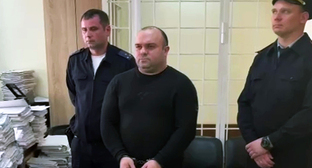14 April 2003, 14:01
Kakabadze, David
Georgian artist, arts theorist and historian, inventor.
Born sin the village of Kukhi, near Kutaisi, son August 8 (20), 1889, in a family of a peasant. In 1909, entered Physics and Mathematics Department of St. Petersburg University. In 1910-1915, studied in an art workshop of L.E. Dmitriev-Kavkazsky. In 1914, together with P.N. Filonov, created a group Intimate Workshop of Painters and Drawers, which released a manifesto Made Paintings, in which the principles of avant-garde "analytic art" (known mostly by Filonov's works) were first proclaimed.
Still at young age, David Kakabadze was distinguished as a national art antiques connoisseur, having prepared in 1914 the first scientific essay of medieval minter Beke Opizari. Kakabadze's "Imeretin period" (1911-1919) is characterized with epic motives of Caucasian nature solved in symbolic generalized spirit of moderne style (Imeretia, My Mother, 1918, Georgia's Art Museum, Tbilisi).
In 1919-1927, lived in Paris. Studied history and culture of Byzantium under G. Mille's guidance. Combined moderne (in landscapes of Paris and Brittany) with avant-garde experiments becoming an original variant of post-futuristic transition to abstract kinetic art. Polemicizing with Cubists, stated that only a curvy, dynamic line is capable of incorporating a modern "spirit of machinism".
Introduced mirrors, lenses, and blinking metals into his collages, trying to receive an effect of internal light emitted by the composition itself. In 1923, became one of stereo cinema inventors by constructing and patenting a cinema apparatus giving an illusion of embossed image.
Returned to his homeland in 1927; combined the national romantic themes of his "Imeretin period" with the social realism canons. Worked productively as a pedagogue in Tbilisi Art Academy (1928-1848), as well as a painter for theater and cinema. In 1934, filmed a documentary Georgia's Art Monuments.
David Kakabadze deceased in Tbilisi on May 10, 1952.





Комментирование через Кавказский узел